MACRO OCTOBER IN MARLERA - Episode Four - WHAT I FOUND ON THE SEVENTH DAY
When it comes to the local flora & fauna, this October ended up being more inspiring than I could have ever expected. The summer temperatures during the day with a bit of autumnal humidity early in the morning created the conditions for many plants to bloom and many small arthropods to be active and thrive. Inspired by nature, I feel the urge to visit Marlera, the coastal area a couple of kilometers from the village of Liznjan, and about five or six kilometers from where I live, almost every day.
In today's post, I'm gonna show you what I found on the seventh of October, late in the afternoon.
Observing this moth was definitively the highlight of the whole experience.
Its translucent wings look great in the subdued ambient light of that undefined time of the day situated somewhere between the fading afternoon and the upcoming evening. The name of the species is Palpita vitrealis, the name of the family is Crambidae, and this was the last insect I photographed that day.
This leafhopper was the first. Eupteryx melissae is the name of this species from the Cicadellidae family. In this photograph, the leafhopper is sucking the nutrients from some herbaceous plant. Its proboscis stuck into the juicy tissue of the leaf is clearly visible. In the following set of nine, more or less consecutive shots ...
... you can see the same insect using its legs to clean its head, eyes, and wings. The process looks like some kind of dancing ritual, a yoga exercise, or something similar. Whatever it is, it looks very uplifting and inspiring - I almost started doing the same.
At one point, while I was photographing the leafhopper, a tiny springtail from the Entomobryidae family entered the scene. You can see it in the lower right corner of this photograph.
Here you can take a break from the macro view by taking a look at the young plant that has the potential to become a tree one day. A Celtis australis tree, more specifically.
Here you can see an interesting fly that was resting on a blade of grass. In the following photograph ...
... I came closer to take a better look through the macro lens.
I don't remember seeing a fly like this before.
By its appearance, is immediately clear that it belongs to the Sciomyzidae family. But only today, while preparing this post, I learned that the name of the species is Pherbellia limbata.
I learned also that can be found throughout southern and central parts of Europe, but it can't be found easily. It's a rare species. Flies from the Sciomyzidae family are commonly known as marsh flies. As the common name suggests, most Sciomyzidae species like very humid habitats. Pherbellia limbata is one of the few species that live in hot and dry habitats, among the vegetation that grows on calcareous soil.
The larvae of this fly attack and eat various small land snails and then pupate in their empty shells.

Here you can see another leafhopper.
It's a wingless nymph, not a completely developed adult insect.
With quite a few similar-looking leafhoppers present in the area, a nymph like this is very hard to identify. I can't tell you what species is this. The family is Cicadellidae.
Identifying adult leafhoppers can often be an equally difficult task. Judging by its appearance, the one shown in this triptych could be the Euscelis distinguendus. Or the Hardya tenuis. Or the Pinumius areatus. Or something else from the Cicadellidae family.
A look at this photograph can provide another beneficial break from the macro view. The protagonist of the shot is the Foeniculum vulgare, a plant commonly known as the wild fennel.

Here you can see a pair of Hippodamia variegata ladybeetles mating among the tiny wild fennel flowers that are losing their petals. Those flowers will become fruits pretty soon.
On one of some completely dry plants, twenty or thirty meters from the fennel, I found this shield bug that recently came out of its old exoskeleton. The insect shown in this and the following two photographs, started the day as a wingless nymph and now, in the evening, has become a winged adult,
Here you can take a look at the same scene photographed in ambient light.

The name of this bug from the Pentatomidae family is Carpocoris purpureipennis, but since the insect is still soft and pale after the recent molting, it doesn't look like a typical Carpocoris purpureipennis shield bug.
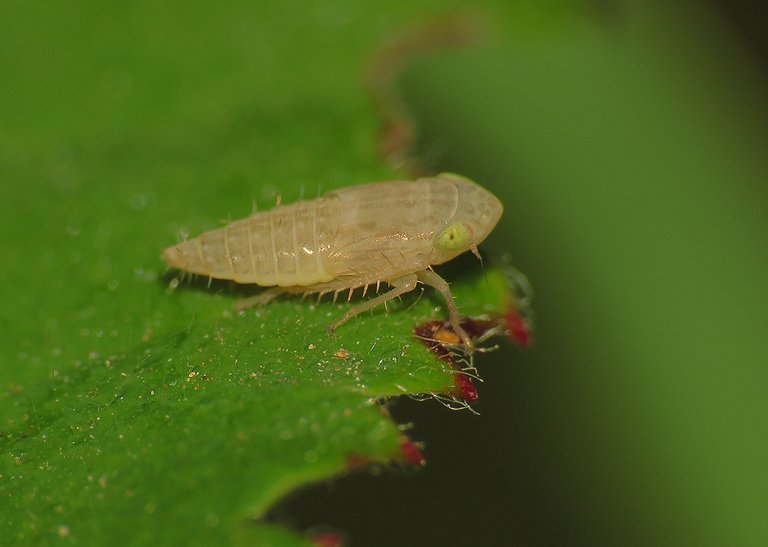
Here you can see another leafhopper nymph I wasn't able to identify.

This is a moth larva.
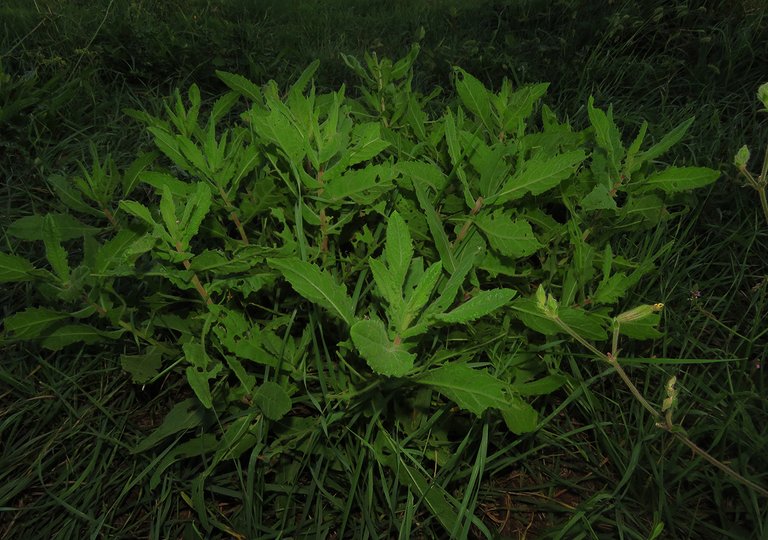
I found it on the leaves of the Dittrichia viscosa plant.

In this photograph, I came closer to the caterpillar, so you can take a better look at the details of its external anatomy.
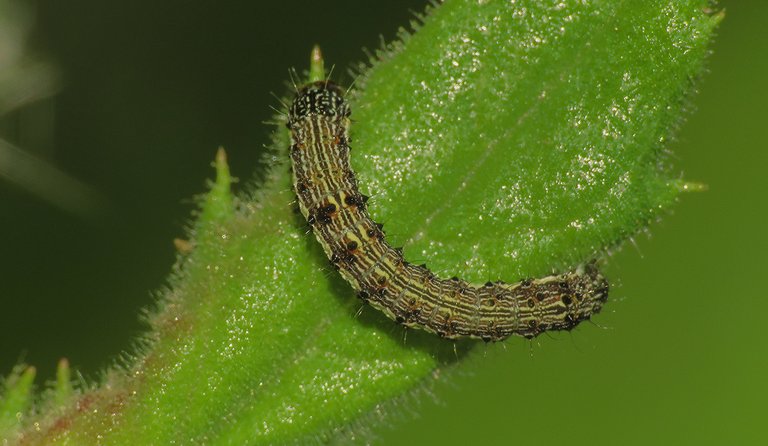
The name of the species is Helicoverpa armigera.
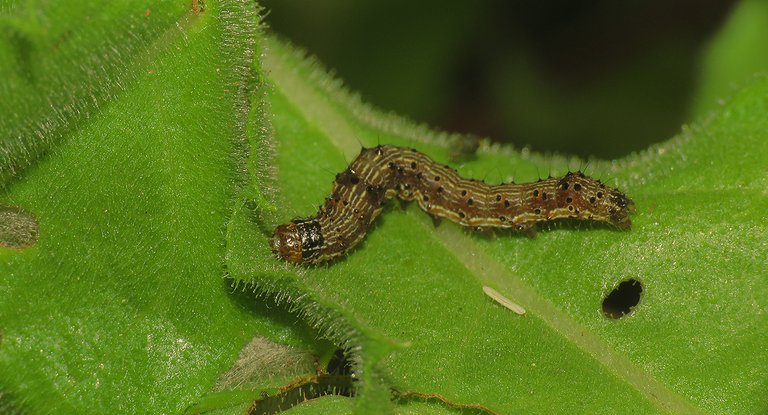
Helicoverpa armigera is a moth from the Noctuidae family. I encounter the larvae of this species very often, the adults - not so much.
These caterpillars feed on a wide variety of wild and cultivated plants.
In this shot, especially if you enlarge the picture by clicking on it, you can see the Helicoverpa armigera caterpillar next to the Macrotylus paykulli, a small bug from the Miridae family.

You can always find a thing or two that is worth observing and photographing on the Dittrichia viscosa plants.
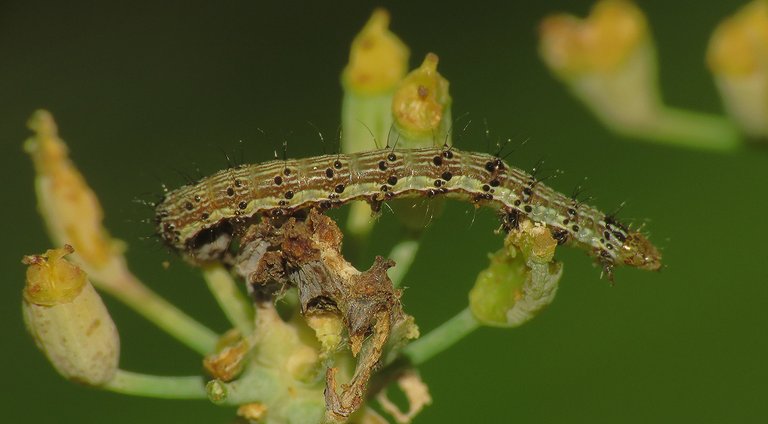
Later I came across a Helicoverpa armigera caterpillar that was feeding on fennel.
Just like Helicoverpa armigera, the moth shown in this photograph also belongs to the Noctuidae family. The name of the species is Autographa gamma. On the grass, a meter or two from the moth ...
... I found and photographed this Pisaura mirabilis spider. At this point, the night wasn't very far.
I was ready to leave Marlera when I noticed the beautiful moth that started this post.
I photographed two Palpita vitrealis moths before leaving. In these two photographs, one of which was taken with the flash of my camera and the other in the low ambient light, you can see the first one.
A couple of meters further, the second Palpita vitrealis has spread its beautiful wings allowing me to take a few attractive shots.
AND THAT'S IT. HOPE YOU ENJOYED THIS MACRO EXPERIENCE. AS ALWAYS HERE ON HIVE, THE PHOTOGRAPHS ARE MY WORK.
The following links will take you to the sites with more information about some of the protagonists of this post. I found some stuff about them there.
https://en.wikipedia.org/wiki/Palpita_vitrealis
https://en.wikipedia.org/wiki/Eupteryx_melissae
https://en.wikipedia.org/wiki/Entomobryidae
https://en.wikipedia.org/wiki/Celtis_australis
https://www.biotaxa.org/Zootaxa/article/view/zootaxa.4117.1.2
https://www.truehopperswp.com/families/cicadellidae
https://en.wikipedia.org/wiki/Hippodamia_variegata
https://en.wikipedia.org/wiki/Helicoverpa_armigera
https://en.wikipedia.org/wiki/Silver_Y


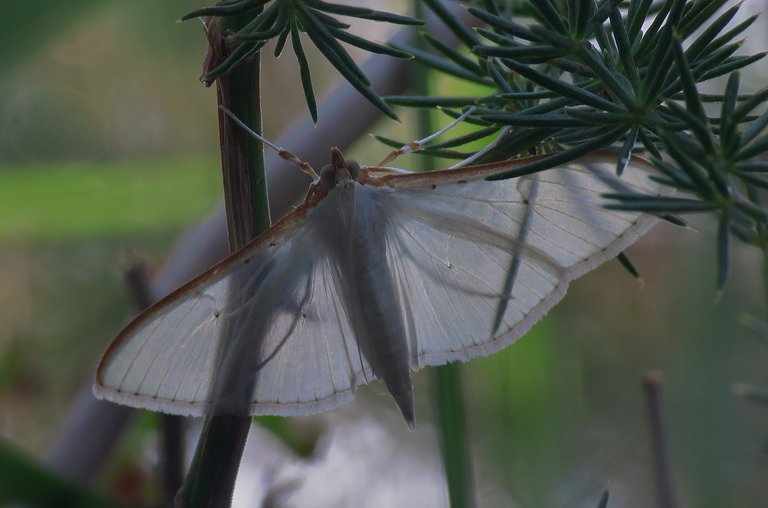
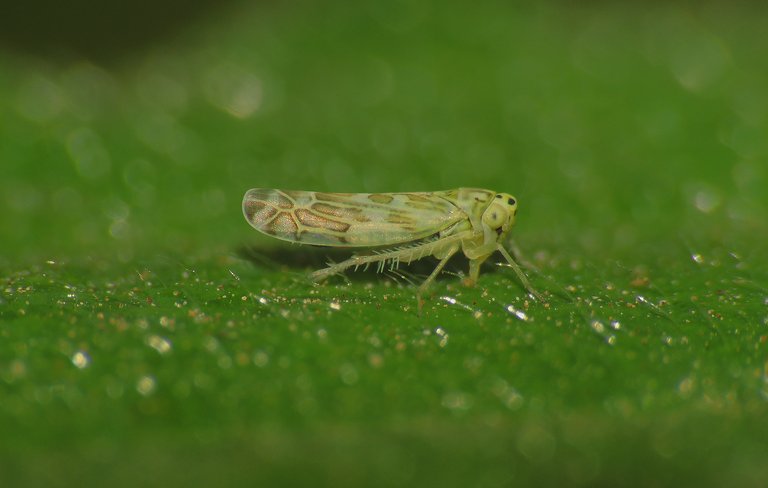
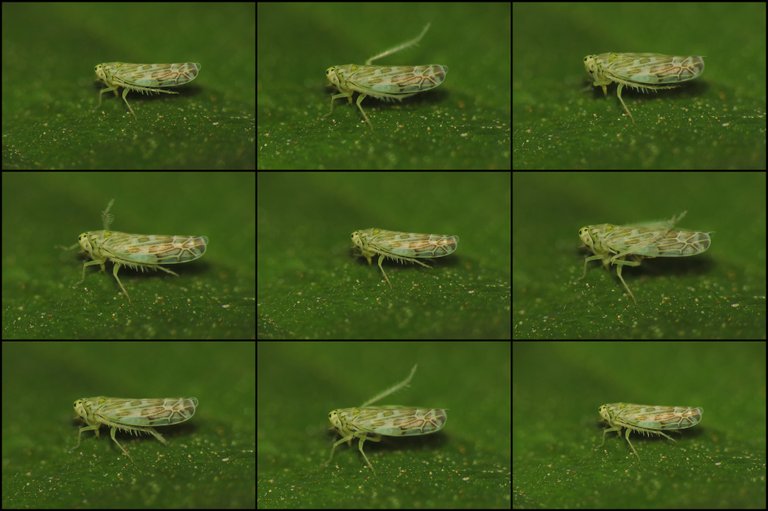
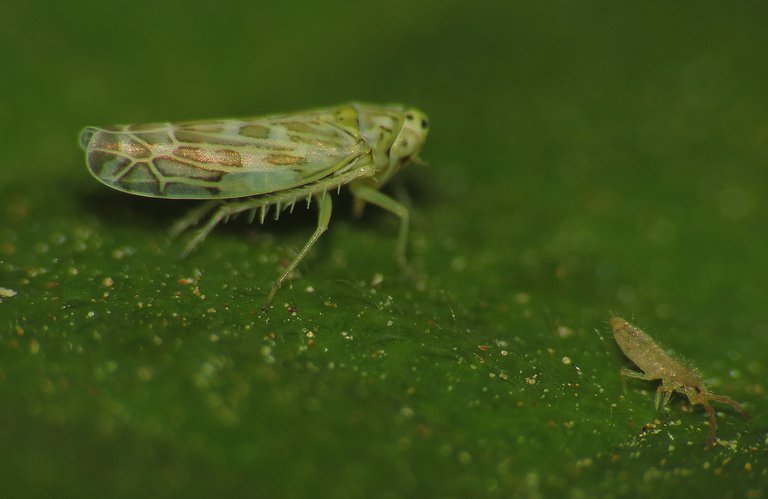




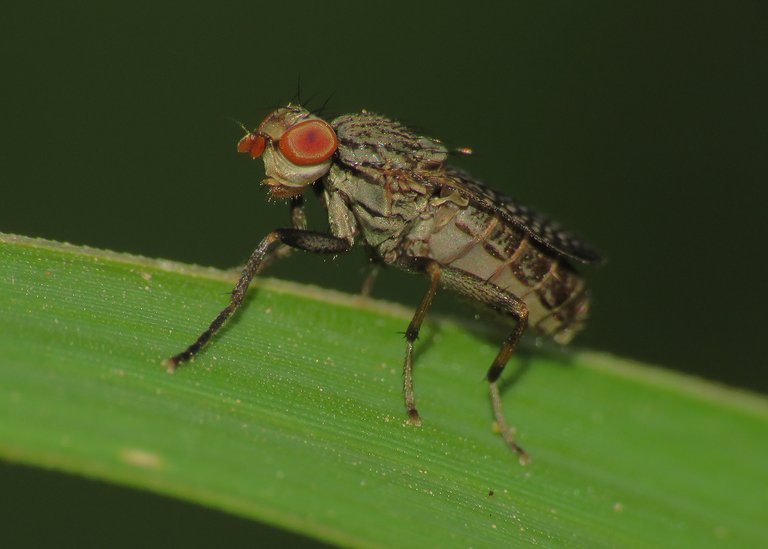
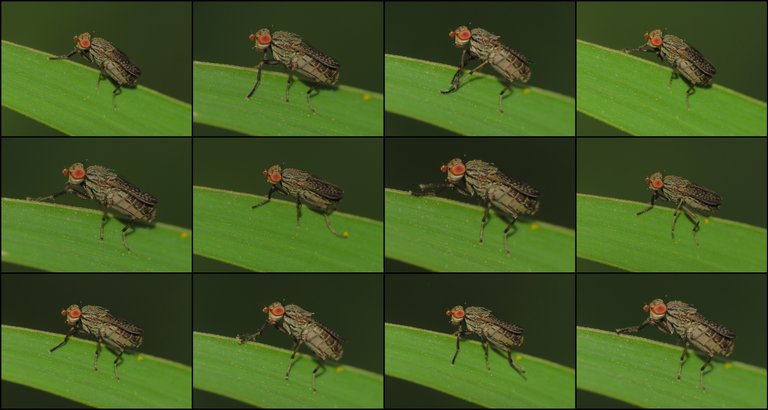
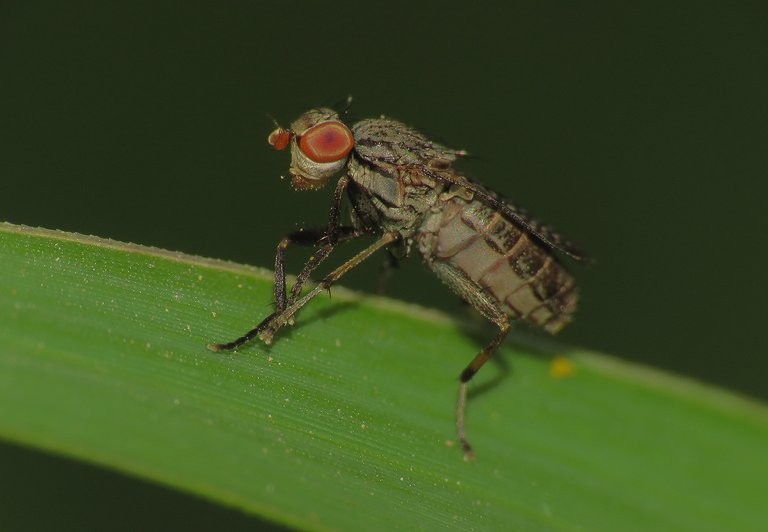
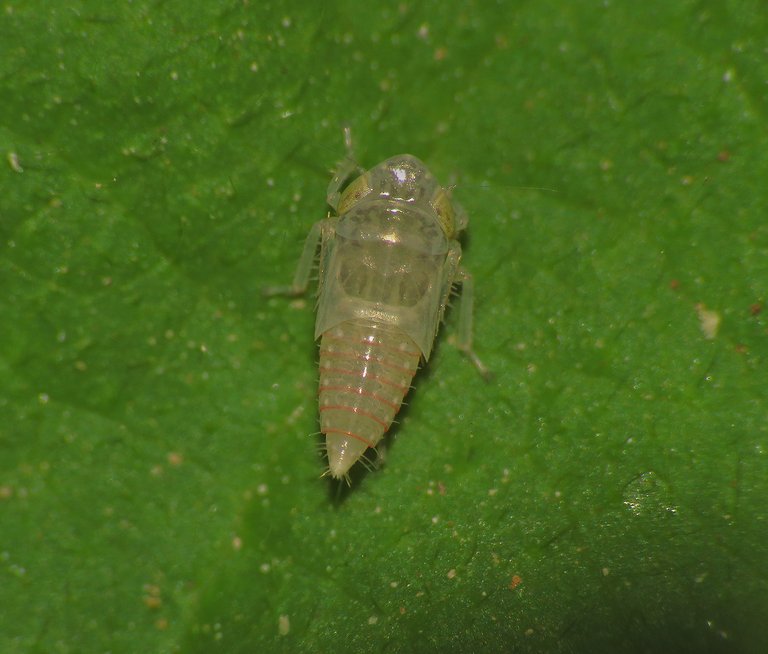






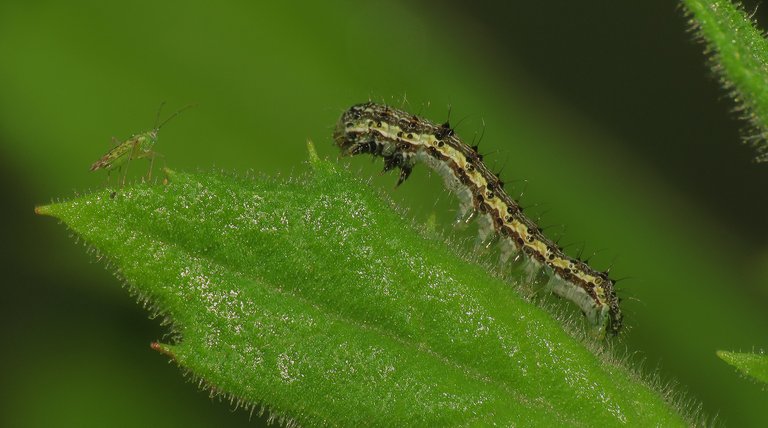





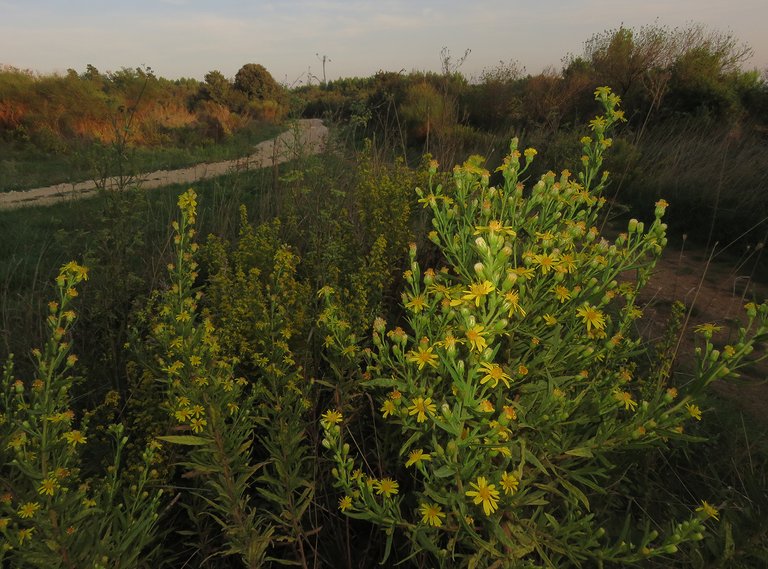
Very nice shots. But these are captures of summer I think. In winters usually, insects do not find everywhere and its hard to see their view.
However You can see them in sunlight like we take sun warmth, they also do same.
These are captures of October. It's early autumn here where I live. Today, on the 17th of October, finally got colder, but until today it still felt a lot like summer.
Beautiful shots. The moth looks amazing with its translucent wings. I guess that's what makes it unique. That insect with a touch red on its skin looks amazing too.
Awwww! You are welcome 🤗
First i thought it's a butterfly than i saw that it's a moth with beautiful wings.
Nice photographs 😍
Have a nice day ahead ☺️🙏
... and have a great day ☀️
The shots are amazing. You have the best shots among those I see here.
Especially the moth looks the most beautiful. Well you share so many beautiful moths and so many moth photography in every post they look really amazing.
The white wings of the moth is fascinating! This is fourth episode but still I find new insects everyday in your post. A variety of them makes it worth visiting. 💖
Yes. 😃 all these episodes are made of photographs I took in the same area ... about fifty square meters area.
Congratulations @borjan! You have completed the following achievement on the Hive blockchain And have been rewarded with New badge(s)
Your next target is to reach 21500 replies.
You can view your badges on your board and compare yourself to others in the Ranking
If you no longer want to receive notifications, reply to this comment with the word
STOPCheck out our last posts:
The moth looks very charming and the color looks very soft
Are you welcome
That leafhopper looks to be in immaculate condition! The body almost looks to be 3d printed.. remarkable mate. That fly looks gansta haha. Dope pics all round!
At first I wasn't able to grab it thinking it was butterfly. I love those shots. It is really amazing
You are welcome
El apareamiento de las mariquitas esta genial, y el color de los ojos de la mosca es único en su estilo.
https://twitter.com/JunaidFazal1111/status/1714234034010616187?
Nice pictures of nature there man
Love the moth.
Today we dance with the Leafhoppers, just like some kind of ancient Druid festival (old English mythology) perhaps. As usual so many interesting flora and insects to see in your macro photography. Well done! 👏
Have a great day Borjan & stay !ALIVE & Smiling !VSC !LOLZ 😎
@fun.farms has sent VSC to @borjan
This post was rewarded with 0.1 VSC to support your work.
Join our photography communityVisual Shots
Check here to view or trade VSC Tokens
Be part of our Curation Trail
@fun.farms ha enviado VSC a @borjan
Éste post fue recompensado con 0.1 VSC para apoyar tu trabajo.
Únete a nuestra comunidad de fotografía Visual Shots
Consulte aquí para ver o intercambiar VSC Tokens
Se parte de nuestro Trail de Curación
@borjan! You Are Alive so I just staked 0.1 $ALIVE to your account on behalf of @ fun.farms. (1/10)
The tip has been paid for by the We Are Alive Tribe through the earnings on @alive.chat, feel free to swing by our daily chat any time you want, plus you can win Hive Power (2x 50 HP) and Alive Power (2x 500 AP) delegations (4 weeks), and Ecency Points (4x 50 EP), in our chat every day.

lolztoken.com
He had no chance against all 5 of us.
Credit: reddit
@borjan, I sent you an $LOLZ on behalf of fun.farms
(1/10)
Delegate Hive Tokens to Farm $LOLZ and earn 110% Rewards. Learn more.
Do you mean that there is truly an animal that is named leafhopper?
I only know about Grasshopper but thank you for sharing with us
Yes, there is a large group of insects that includes many small but colorful species and is called "leafhoppers" in English. Another related group is called " planthoppers" and there is another one that is called "froghoppers".
Congratulations, your post has been upvoted by @dsc-r2cornell, which is the curating account for @R2cornell's Discord Community.
Wow, Palpita vitrealis looks really magical, like a ballerina or princess with a magic cloak. !LUV
No matter what, I sometimes like moths better than butterflies. Also for the reason that they stand still and can be photographed easily, unlike butterflies. !LOL
I've never seen a Palpita vitrealis live, so I can't say if it's again just your lens that makes it look so beautiful. Because your lens makes even insects that I don't like very well, like the shield bugs or the caterpillars, look beautiful. 😊
!PIZZA
lolztoken.com
But it was too corny.
Credit: reddit
@borjan, I sent you an $LOLZ on behalf of soulsdetour
(1/4)
Delegate Hive Tokens to Farm $LOLZ and earn 110% Rewards. Learn more.
@borjan, @soulsdetour(1/4) sent LUV. | connect | community | HiveWiki | NFT | <>< daily
! help(no space) to get help on Hive. InfoHaha yes, butterflies can be annoying when one is trying to catch them with the camera. 😃 I feel more calm and meditative with insects that aren't so prone to fly away before the photograph is taken.
$PIZZA slices delivered:
@soulsdetour(1/5) tipped @borjan